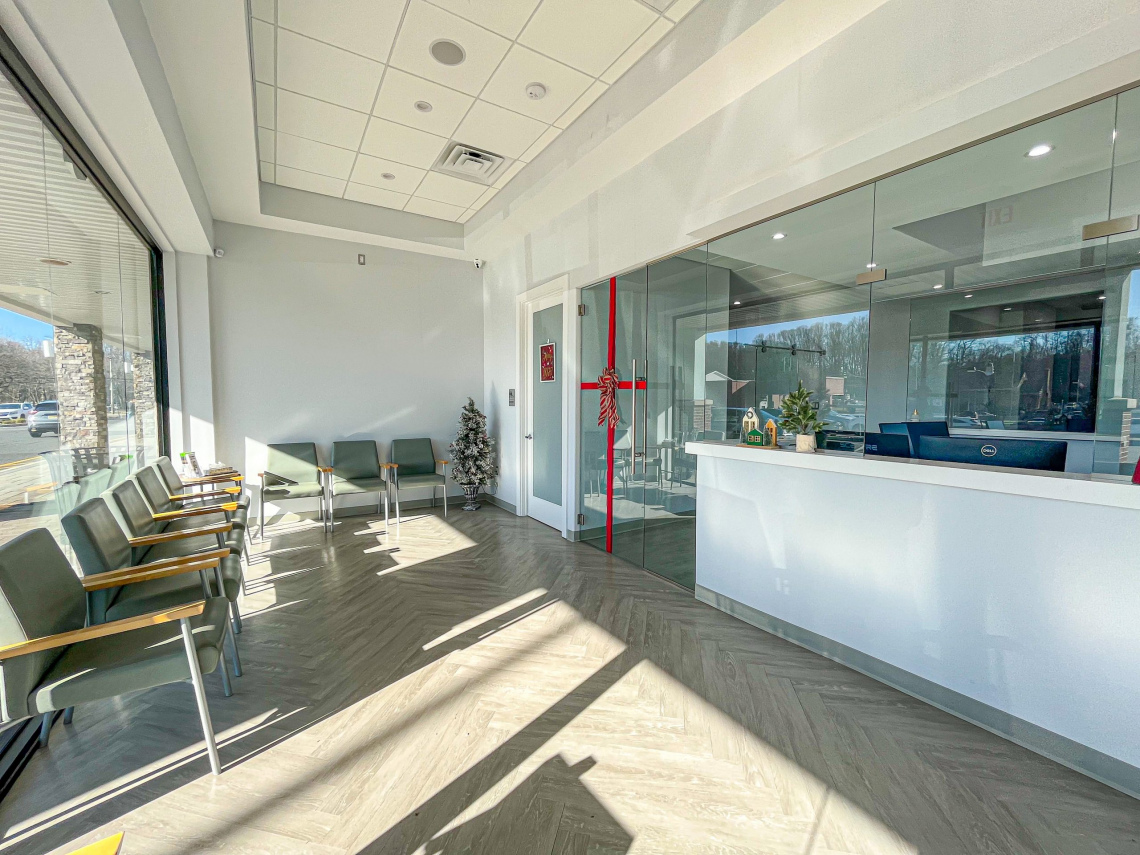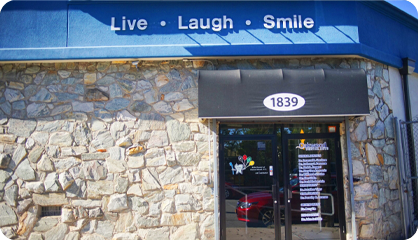Selecting an appropriate orthodontist is a critical decision for achieving optimal oral health and aesthetic results. Whether you’re considering orthodontic treatment for your child or exploring adult treatment options, the following 12 key considerations will guide you in selecting a qualified orthodontist. The orthodontist you choose significantly impacts treatment efficacy, patient comfort, and overall satisfaction with the process.
| Key Takeaways |
|---|
|
• Check for specialized orthodontic training and certification • Evaluate the range of services and treatment modalities offered • Consider their experience with your specific clinical needs • Assess their technological capabilities and methodologies • Review patient testimonials and clinical case documentation • Ensure effective communication and personalized treatment planning • Consider location, scheduling flexibility, and financial arrangements • Trust your overall assessment of the practice |
1. Check for Specialized Orthodontic Training and Certification
When evaluating potential orthodontists, prioritize practitioners who have completed advanced education beyond dental school. Look for specialists who have undertaken an additional 2-3 years of orthodontic residency training and verify their certification status with the American Board of Orthodontics. Orthodontic specialists possess the expertise to address complex cases and maintain current knowledge of advancing techniques. This specialized education ensures comprehensive understanding of craniofacial growth and development, biomechanics of tooth movement, and contemporary orthodontic approaches.
2. Look at the Types of Orthodontic Services They Offer
A comprehensive orthodontic practice should offer diverse treatment modalities for addressing malocclusion. These may include conventional metal brackets for significant corrections, ceramic brackets for improved aesthetics, and Invisalign clear alignersfor cases with mild to moderate teeth misalignment. Ensure the practice provides age-appropriate treatments for pediatric, adolescent, and adult patients. Additionally, consider orthodontists who offer specialized options such as lingual appliances or accelerated orthodontic techniques. A diverse treatment portfolio demonstrates the practice’s capability to develop individualized treatment protocols.
3. Think About Their Experience with Your Specific Needs
Each orthodontic case presents unique challenges, making it essential to select a practitioner with relevant clinical experience. Inquire about their experience treating patients in your demographic group and their success with cases similar to yours. Discuss your specific concerns and treatment objectives to ensure compatibility with their expertise. For instance, if you present with significant skeletal discrepancies, seek an orthodontist with demonstrated success in addressing such conditions. Adult patients should confirm the practitioner’s experience with mature dentition, which presents distinct treatment considerations compared to developing dentition.
4. Check What Kind of Technology and Methods They Use
Progressive orthodontic practices should utilize contemporary diagnostic, treatment planning, and clinical technologies. Look for practices equipped with 3D imaging capabilities, digital radiography, and computer-aided treatment planning software. Advanced bracket systems and archwire technologies can enhance treatment efficiency, while intraoral scanning systems eliminate the discomfort associated with traditional impression materials. These technological resources facilitate precise diagnosis and treatment planning while potentially reducing overall treatment duration.
5. Look at the Office and How the Staff Treats You
The clinical environment and interpersonal dynamics within the practice significantly influence the treatment experience. Seek a practice characterized by cleanliness, professionalism, and modern facilities. Observe staff interactions with patients and colleagues, and assess the comfort and functionality of the reception area. A well-managed practice with attentive personnel enhances the orthodontic treatment experience. Pay particular attention to appointment scheduling efficiency, communication protocols, and problem resolution procedures. A knowledgeable, supportive administrative team contributes substantially to patient comfort throughout treatment.
6. Read What Other Patients Say and Look at Before/After Photos
Patient testimonials and clinical documentation provide valuable insight into practice quality. Review online patient evaluations and testimonials regarding treatment experiences. Request to view pre-treatment and post-treatment documentation for cases similar to yours. This information facilitates informed decision-making regarding practitioner selection. Focus on reviews addressing factors relevant to your priorities, such as treatment comfort, or management of complex malocclusions. Clinical case documentation demonstrates treatment outcomes and technical proficiency in achieving optimal functional and aesthetic results.
Additionally, remain informed about emerging aesthetic dentistry trends that may influence orthodontic protocols. Awareness of these developments may indicate a practitioner’s commitment to continuous professional development.
7. Ensure Clear Communication and Personalized Treatment Planning
An exemplary orthodontist should effectively communicate treatment options in accessible language and develop individualized treatment protocols. Schedule an initial consultation to discuss your concerns and objectives. The practitioner should comprehensively explain recommended interventions and alternatives while remaining responsive to your preferences and inquiries. The orthodontist should thoroughly assess your lifestyle factors, concerns, and expectations. They should clearly articulate the advantages, limitations, and potential challenges of various treatment modalities, and provide realistic outcome projections in understandable terms. Personalized treatment planning ensures alignment between clinical approaches and patient preferences while accommodating lifestyle considerations.
8. Consider Office Location and Hours of Operation
Geographical accessibility is an important consideration given the frequency of orthodontic appointments. Select a practice conveniently located relative to your residence or workplace, verify appointment availability compatible with your schedule, and inquire about emergency protocols and after-hours support. Consider appointment frequency requirements for your specific treatment modality and their compatibility with your routine. Some practices offer extended hours, including early morning, evening, or weekend appointments to accommodate professional commitments. Additionally, establish clear understanding of emergency management protocols for situations such as appliance failures to ensure timely intervention when necessary.
Explore an orthodontist in your vicinity by reviewing our multiple locations. Proximity to your orthodontist facilitates attendance at regular adjustment appointments and provides prompt access to care when complications arise.
9. Look at Payment Options and Insurance
Understanding the financial aspects of orthodontic treatment is an important part of the planning process. It’s advisable to request a detailed breakdown of costs and included services. You may also wish to inquire about payment options, and insurance participation. Some practices may provide internal or third-party financing options to support treatment accessibility. Be sure to fully understand any financial terms, including interest rates and payment schedules. Additionally, asking about possible discounts for upfront payment or family treatment plans can help you make informed decisions. Open and clear.
10. Check How They Handle Ongoing Care and Follow-up
Orthodontic treatment represents a longitudinal commitment requiring consistent monitoring. Inquire about anticipated treatment duration for comparable cases and appointment frequency requirements. Discuss retention protocols to maintain post-treatment alignment. A qualified practitioner will implement structured progress assessment throughout treatment with protocol modifications when clinically indicated. They should provide comprehensive guidance regarding appliance maintenance and emphasize the critical importance of retention compliance following active treatment to preserve treatment outcomes. Some practices maintain extended retention monitoring programs to ensure long-term stability of treatment results.
11. Ask About Special Services for Tough Cases
Complex orthodontic presentations may require adjunctive services or specialized care. Inquire about experience with orthognathic surgery for significant skeletal discrepancies or temporomandibular joint disorder management. Address any special considerations or medical conditions that may influence treatment approaches. For instance, patients with severe skeletal malocclusions may require combined orthodontic-surgical intervention. Ensure your orthodontist maintains collaborative relationships with oral surgeons and has experience with pre-surgical and post-surgical orthodontic management. Additionally, if you present with functional issues such as sleep-disordered breathing or chronic orofacial pain, seek an orthodontist with training in addressing these conditions within the context of comprehensive orthodontic care.
For patients requiring multidisciplinary intervention, explore options for comprehensive oral rehabilitation in conjunction with orthodontic therapy. While not directly orthodontic in nature, this underscores the importance of integrated oral health management and interdisciplinary collaboration in achieving optimal outcomes.
12. Trust How You Feel About Them
Beyond objective criteria, your subjective assessment of the practitioner and practice environment warrants serious consideration. Reflect on your initial consultation experience and your comfort level with the orthodontist and staff. Trust your professional judgment regarding their clinical competence and interpersonal approach, and ensure confidence in your selection before initiating treatment. Note the practitioner’s attentiveness to your concerns and their genuine investment in helping you achieve your treatment objectives. Consider whether adequate time is allocated during consultations or if interactions feel rushed. A positive rapport with your orthodontist enhances the treatment experience and supports motivation for maintaining optimal oral hygiene throughout the orthodontic process.
Conclusion
Selecting an optimal orthodontist represents a significant decision with implications for your oral health and self-confidence. By carefully considering these 12 essential factors, you can make an informed choice and embark on your journey toward improved dental alignment with confidence. Remember that orthodontic treatment represents an investment in your long-term orofacial health and well-being. Allocate sufficient time for research and consider multiple consultations if necessary to identify the most suitable practitioner for your needs. A distinguished orthodontist will not only achieve proper dental alignment but also optimize overall orofacial function and enhance self-image.
Remember, exceptional orthodontic care combines clinical expertise, technological advancement, and personalized attention to deliver optimal outcomes. Maintain impeccable oral hygiene throughout orthodontic treatment by following these comprehensive preventive dental recommendations. Meticulous oral hygiene is particularly critical during orthodontic therapy to prevent complications such as demineralization and periodontal inflammation, which may compromise treatment progress.
Ready to begin your orthodontic journey? Contact Oakwood Dental today to schedule a consultation with our experienced orthodontic team. Allow us to help you achieve the smile you’ve always desired. Our team of skilled professionals is dedicated to providing personalized, high-quality orthodontic care utilizing contemporary techniques and technologies. We look forward to helping you transform your smile and enhance your confidence.

 718-979-2121
718-979-2121















